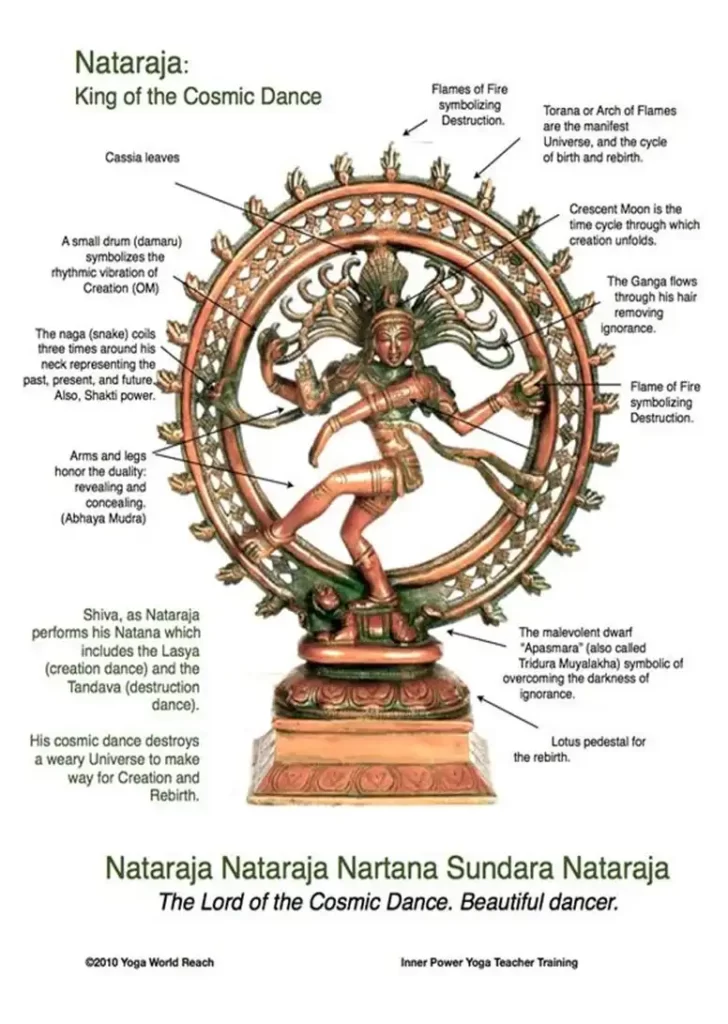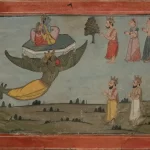Nataraja: Symbolism and Relevance in Contemporary Times
Nataraja, The end of the universe’s cycle is closely associated with Shiva. One of the principal deities in the Hindu trinity (Tridev). Shiva, revered as the destroyer and transformer, is believed to have taken on numerous forms throughout the ages.
One of his most prominent manifestations is Nataraja, the Lord of Dance. As Nataraja, Shiva performs the Tandava, a powerful and intense dance symbolic of cosmic destruction and renewal.
According to Hindu mythology, Lord Shiva performed the Rudra Tandava, a fierce and sorrowful dance. While holding the charred remains of his wife, Sati. This dance symbolizes his grief and rage.
ALSO READ: Puppetry Tales: The Soul of Rajasthan’s Folk Heritage
The iconic bronze free-standing sculptural representation of Nataraja became prevalent around the 10th century CE. Although earlier examples in stone date back to the 5th and 6th centuries CE (Cartwright, 2015).
Scholar Padma Kaimal states that reliefs carved at the Sadaiyar Temple in Tiruchchemanpundi, the Natunia Ishwara Temple in Punjai, and the Gomuktishvara Temple in Tiruvaduturai influenced the primary elements of the Nataraja figure.

However, these reliefs lacked certain features, such as the dwarf at Shiva’s feet and the depiction of the Ganga flowing from his hair. The cultic expansion and growing devotion to Nataraja in the town of Chidambaram can be linked to the first modern depictions of Nataraja (Kaimal, 1999).
The Cosmic Dance of Nataraja
During the Chola era, Chidambaram, located between the Pennar and Kaveri rivers, emerged as a significant sacred site. The Chola rulers believed that Shiva resided there and performed the Ananda Tandava, or “Dance of Bliss.”
According to Hindu mythology, this cosmic dance unfolded in Chidambaram’s Tillai forest, where Shiva appeared in his Bhikshatana form to humble sages who opposed proper devotion.
Shiva is confronted by demonic entities sent by the sages in an attempt to humiliate him. However, not only does Shiva defeat these entities, but he also performs his Dance of Ecstasy.
Scholar Padma Kaimal draws a parallel between this cosmic dance and the victory dances of Chola soldiers, suggesting that the Cholas may have felt a connection with Shiva through their shared martial experiences during his battle in the Tillai forest (Shiva Nataraja’s Origins, 2021).
In addition to symbolizing the Lord of Dance, the sculpture of Nataraja became associated with paradoxical concepts that extended beyond Shiva’s traditional role as a destroyer.
For instance, the Nataraja sculpture represents the creation, movement, and destruction of human life, as well as the cyclical nature of birth and rebirth, as outlined in Hindu religious texts.
Moreover, it signifies the creation, movement, and destruction of the universe itself. Perhaps most intriguingly, the Nataraja sculpture has been interpreted as a representation of modern quantum and particle physics.

To fully understand these interpretations, it is essential to examine the perspectives and arguments presented by various scholars regarding the significance of the Nataraja sculpture.
A. K. Ananda Coomaraswamy
Ananda Coomaraswamy, a renowned metaphysician, historian, and pioneer of Indian art, was one of the first contemporary scholars to establish connections between Indian culture and Western concepts.
According to metallurgical scientist Sharada Srinivasan, Coomaraswamy sought to describe the traditional arts and crafts of Ceylon in 1902, framing them within the context of social history and circumstances.
Through his work, he effectively bridged the cultural understanding between India and the West. (Devika, 2018)
Fundamental Qualities of the Nataraja Symbol
The Nataraja sculpture is rich in symbolism, with the following key elements:
- Four Hands: Two hands are positioned on each side.
- Flame in the Upper Left Hand: Symbolizing destruction and transformation.
- Muyalaka the Demon: Represented under the bottom left hand, holding a snake.
- Drum in the Upper Right Hand: Signifying creation and the rhythm of the cosmos.
- Abhaymudra Gesture: Represented by the lower right hand, offering protection and reassurance.
- Crushing the Demon: The right foot steps on the demon, symbolizing triumph over ignorance.
- Raised Foot: The left foot is lifted, representing liberation and enlightenment.
- Jeweled and Braided Hair: The hair is adorned with jewels and braids.
- Iconography in the Hair: Includes the river Ganga, a skull, and a coiling cobra.
- Lotus Pedestal: The figure stands atop a lotus, a symbol of purity and spiritual awakening.
- Circle of Flames: Encircling the figure, it represents the cycle of time, destruction, and creation. The hands holding the drum and the flame reach out to this cosmic halo.
This intricate imagery reflects profound philosophical concepts central to Hinduism.
Symbol of Paradox
In her work “Shiva Nataraja as Symbol of Paradox,” Gomathi Narayanan (1986) explores how the God of destruction embodies both all-pervasive benevolence and destructiveness.
The article’s central argument highlights that Shiva, also known as “Mahesh” in the Hindu Trinity of Gods and traditionally associated with destruction and the end of the cosmic cycle, actually performs the roles of all three gods in the Trinity through his manifestation as Nataraja.
Shiva creates the universe with his drumbeats as he performs the Tandava, and through this, he not only protects the universe but also imparts the lesson of overcoming one’s ego and dispelling worldly illusions.
This is essential for liberation from the never-ending cycle of existence, represented by the circle of flames (Narayanan, 1986).
Thus, Nataraja serves as a symbol that contradicts the original view of Lord Shiva as the God of Destruction. It also functions as a teaching tool, emphasizing that liberation is rooted in introspection and the ability to overcome worldly illusions.

Conclusion
In my opinion, the manifestation of Lord Shiva as Nataraja is not only a symbol of artistic and religious pride or growth but also a representation of the connection between different cultures.
It highlights the interdisciplinary nature of the icon, bridging fields such as physics and psychology. This perspective is based on an analysis of the ideas and theories proposed by various scholars.
The Nataraja symbol is strikingly similar to the Circle with a Dot, which represents Alchemical Gold. This symbol shows how creation emerges from Unity. Like the “Big Bang,” guiding us to the Infinite Light of the Self and highlighting. How individuals shape their own joys and challenges. Holding the power to break free from the cycle. It also reflects contemporary physics, human psychology, and epilepsy, particularly in relation to memory.


